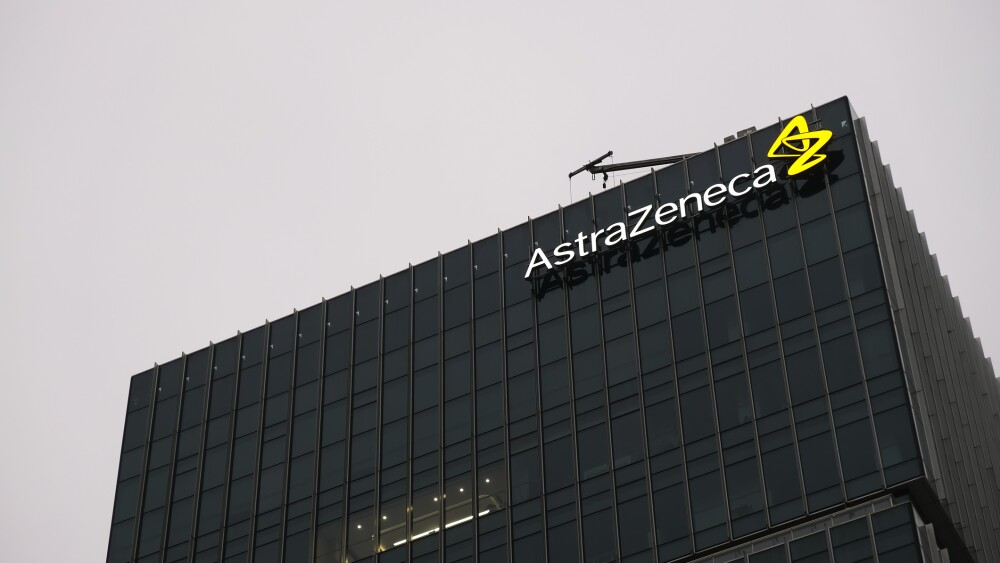Vertigo Market Outlook 2025-2035:
The 7 major vertigo market reached a value of USD 1.4 Billion in 2024. Looking forward, IMARC Group expects the 7MM to reach USD 2.1 Billion by 2035, exhibiting a growth rate (CAGR) of 3.45% during 2025-2035. The Vertigo market is fueled by the growing use of non-invasive and minimally invasive therapies, including vestibular rehabilitation therapy (VRT), balance training, and transcranial magnetic stimulation (TMS). These sophisticated methods efficiently handle vertigo symptoms by improving balance ability, decreasing dizziness occurrences, and enhancing the overall life quality for individuals. VRT specifically targets exercises designed to help the brain adapt to vestibular deficiencies, providing a lasting and medication-free alternative. Innovative technologies like wearable vestibular devices and virtual reality therapies improve treatment results by offering customized and immersive rehabilitation experiences. These methods reduce the necessity for medicinal therapies and surgical interventions, rendering them an appealing choice for individuals looking for safe, effective, and convenient options for managing vertigo.
Advances in Early Detection and Diagnostic Technologies: Driving the Vertigo Market
Contemporary diagnostic and therapeutic technologies are revolutionizing the Vertigo market, greatly enhancing patient care and results. Sophisticated diagnostic instruments, including video nystagmography (VNG) and vestibular evoked myogenic potentials (VEMP), allow accurate evaluation of vestibular function and support focused treatment strategies. High-resolution imaging methods, such as functional MRI and 3D CT scans, provide intricate visualization of vestibular pathways, assisting in pinpointing the root causes of vertigo. These developments are enhanced by new balance evaluation tools, like posturography systems and wearable motion sensors, that track patient stability and walking patterns in real time. New molecular diagnostics, such as genetic profiling and biomarker analysis, are becoming increasingly important for comprehending vestibular dysfunction at a cellular level, which facilitates personalized treatment approaches. Non-invasive treatments like vestibular rehabilitation therapy (VRT) and transcranial magnetic stimulation (TMS) have proven to be effective options that require little recovery time and have fewer side effects. Wearable technologies, such as smart balance-tracking tools, offer ongoing monitoring and immediate feedback to patients, encouraging compliance with rehabilitation exercises and delivering data-informed insights for healthcare professionals. Telemedicine platforms are essential in increasing access to specialized care, especially in remote regions where vestibular specialists might be hard to find. By utilizing remote consultations, diagnostic evaluations, and online therapy sessions, patients can obtain prompt and efficient care, enhancing long-term results and life quality. The incorporation of AI in diagnostics boosts precision by autonomously assessing vestibular test outcomes and forecasting treatment reactions, minimizing reliance on subjective assessments and improving patient care routes.
Request a PDF Sample Report: https://www.imarcgroup.com/vertigo-market/requestsample
Development of Novel Therapies and Pharmacological Treatments: Contributing to Market Expansion
The Vertigo market is growing due to the launch of new therapies paired with cutting-edge pharmacological treatments. New oral and transdermal medications are being created to address the root causes of vestibular dysfunction, such as neuroinflammation and irregular vestibular signaling, serving as essential strategies for preventing and treating vertigo attacks. These novel medications demonstrate greater effectiveness, reduced side effects, and more precise action mechanisms, leading to better patient results and satisfaction. Investigation into biological treatments is progressing swiftly, especially for moderate to severe instances of chronic vertigo linked to inflammatory or autoimmune vestibular disorders. Monoclonal antibodies aimed at pro-inflammatory cytokines like interleukin-1β and tumor necrosis factor-alpha (TNF-α) are under investigation for their ability to lessen neuroinflammation and stabilize vestibular function. Improvements in drug delivery methods, including nanotechnology-based carriers, liposomal formulations, and transdermal patches, facilitate targeted drug delivery to the vestibular system, achieving increased drug concentration at the action site while minimizing systemic exposure and side effects. These methods improve treatment effectiveness while reducing patient discomfort. Ongoing development of adjunct therapies includes probiotics and neuroprotective agents designed to rebalance the central nervous system and improve the body’s innate defenses against vestibular dysfunction. Combination treatments that join neuroprotective agents with anti-inflammatory medications are demonstrating potential in tackling the complex pathophysiology of vertigo. Non-invasive drug options, including nasal sprays and innovative topical formulations aimed at vestibular pathways, are becoming increasingly favored for their simplicity of use, quick onset of effects, and patient-focused strategies, which are boosting the expansion of the vertigo treatment market.
Buy Full Report: https://www.imarcgroup.com/checkout?id=6726&method=809
Regional Analysis:
The major markets for Vertigo include the United States, Germany, France, the United Kingdom, Italy, Spain, and Japan. According to projections by IMARC, the United States has the largest patient pool for Vertigo while also representing the biggest market for its treatment. Novel treatments have recently been developed, with advanced neuroprotective agents, vestibular stabilizers, and inflammation-modulating therapies among them, offering more precise management of Vertigo. Cutting-edge compounds such as vestibular-safe neuropeptides and ion-channel modulators bypass the limitations of traditional treatments by directly targeting vestibular pathways, opening adaptive treatment avenues for complex vertigo etiologies, including neuroinflammation, sensory miscommunication, and vestibular dysfunction, leading to improved patient outcomes and fewer adverse reactions.
Recent advancements in diagnostic tools and methodologies have enabled earlier and more accurate identification of vertigo severity and contributing factors. Innovations such as real-time balance assessment systems, video head impulse tests (vHIT), and AI-assisted vestibular diagnostics allow timely and personalized treatment approaches with minimal adverse events. Other factors driving the growth of the Vertigo market include the approval of new clinical guidelines, increasing investment in R&D, and growing collaboration between pharmaceutical companies, diagnostic technology providers, and research institutions. AI-powered diagnostic tools and telemedicine platforms are ensuring advanced care delivery to remote and underserved areas, democratizing access to state-of-the-art treatments. With advanced therapies and diagnostic solutions, regions like North America and Europe remain at the forefront of innovation, propelling the global Vertigo market toward sustained growth. Emerging markets in Asia-Pacific are also witnessing rapid adoption of these novel solutions, further contributing to global market expansion.
Key information covered in the report.
Base Year: 2024
Historical Period: 2019-2024
Market Forecast: 2025-2035
Countries Covered
- United States
- Germany
- France
- United Kingdom
- Italy
- Spain
- Japan
Analysis Covered Across Each Country
- Historical, current, and future epidemiology scenario
- Historical, current, and future performance of the Vertigo market
- Historical, current, and future performance of various therapeutic categories in the market
- Sales of various drugs across the Vertigo market
- Reimbursement scenario in the market
- In-market and pipeline drugs
Competitive Landscape:
This report offers a comprehensive analysis of current Vertigo marketed drugs and late-stage pipeline drugs.
Ask Our Expert & Browse Full Report with TOC & List of Figure: https://www.imarcgroup.com/Vertigo-market/toc
In-Market Drugs
- Drug Overview
- Mechanism of Action
- Regulatory Status
- Clinical Trial Results
- Drug Uptake and Market Performance
Late-Stage Pipeline Drugs
- Drug Overview
- Mechanism of Action
- Regulatory Status
- Clinical Trial Results
- Drug Uptake and Market Performance
IMARC Group Offer Other Reports:
Panic Disorder Market: The 7 major panic disorder markets are expected to exhibit a CAGR of 2.73% during 2024-2034.
Seizures Market: The 7 major seizures markets reached a value of USD 3.2 Billion in 2024. Looking forward, IMARC Group expects the 7MM to reach USD 5.0 Billion by 2035, exhibiting a growth rate (CAGR) of 4.03% during 2025-2035.
Alzheimer’s Disease Market: The Alzheimer’s disease market reached a value of US$ 3.1 Billion across the top 7 markets (US, EU4, UK, and Japan) in 2023. Looking forward, IMARC Group expects the top 7 markets to reach US$ 6.3 Billion by 2034, exhibiting a growth rate (CAGR) of 6.8% during 2024-2034.
Trigeminal Neuralgia Market: The 7 major trigeminal neuralgia markets reached a value of US$ 234.5 Million in 2023. Looking forward, IMARC Group expects the 7MM to reach US$ 357.8 Million by 2034, exhibiting a growth rate (CAGR) of 3.92% during 2024-2034.
Cushing’s Syndrome Market: The 7 major Cushing’s syndrome markets reached a value of US$ 385.2 Million in 2023. Looking forward, IMARC Group expects the 7MM to reach US$ 831.7 Million by 2034, exhibiting a growth rate (CAGR) of 7.25% during 2024-2034.
Epilepsy Market: The 7 major epilepsy markets reached a value of USD 2.00 Billion in 2024. Looking forward, IMARC Group expects the 7MM to reach USD 2.70 Billion by 2035, exhibiting a growth rate (CAGR) of 2.57% during 2025-2035.
Partial Epilepsy Market: The 7 major partial epilepsy markets are expected to exhibit a CAGR of 9.64% during 2024-2034.
Contact US
IMARC Group
134 N 4th St. Brooklyn, NY 11249, USA
Email: Sales@imarcgroup.com
Tel No:(D) +91 120 433 0800
Phone Number: - +1 631 791 1145, +91-120-433-0800





